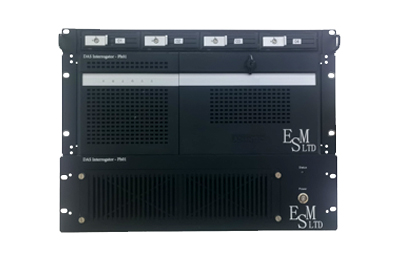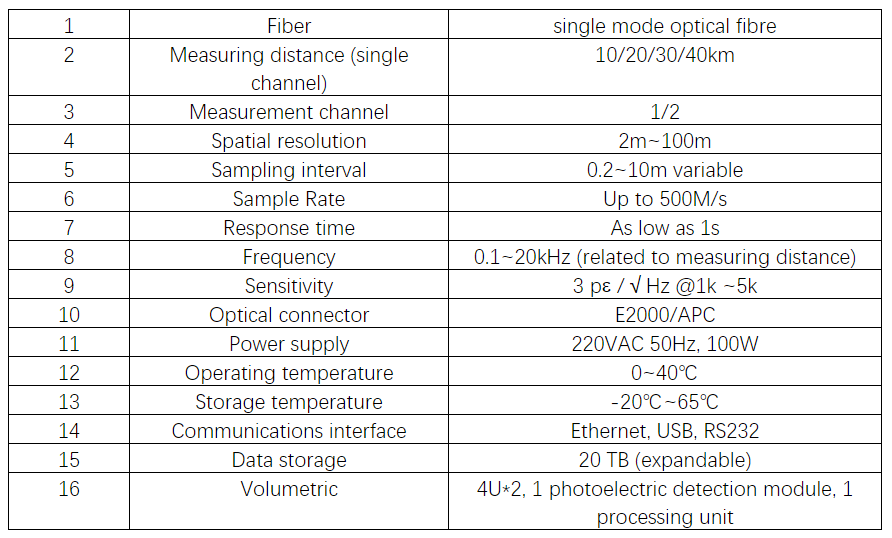DAS-Ph1 Distributed Fibre Optic Acoustic Sensing Interrogator
Distributed Optical Fiber Acoustic Sensor (DAS) is a continuous distributed fibre optic sensing system, which is based on the principle of coherent Rayleigh backscattering, and adopts a single-mode optical fibre as the sensing unit, so that it can obtain real-time information about the vibration around any point along the fibre optic cable. Fibre optic integrates communication and sensing functions, one fibre optic is equivalent to thousands of point sensors, is free from electromagnetic interference, and is suitable for working in harsh environments.
The system adopts the differential coherent detection phase demodulation design, which has higher signal-to-noise ratio than the direct detection design; it can achieve quantitative phase demodulation, and the indicators such as spatial resolution can be flexibly configured in the digital domain; it effectively suppresses the fading problem in the system and has high reliability, and it focuses on the development of the ultra-low-frequency demodulation, which can provide the high-precision testing capability for the oil and gas exploitation field. The product includes a complete set of photoelectric monitoring host module, data acquisition module, sample demodulation algorithm and software module, etc. It adopts the same system architecture with DAS.
Distributed optical fibre acoustic sensing system is widely used in downhole acoustic wave, energy conversion and stress measurement in oil and gas fields. According to the measurement performance of the equipment, it can be applied to oil, gas and water well production profile monitoring, wellbore integrity, and its ULF model DAS equipment is applied in fracturing monitoring, including the same well flow monitoring and the adjacent well fracture monitoring.

DAS-Ph1 interrogator
Technical specification:

Note: The technical indicators are constrained by each other and can be configured, please consult the manufacturer for details; the above indicators are conventional system indicators, and specific indicators can be accepted for customization, such as high spatial resolution, high bandwidth, long distance, ultra-low frequency detection requirements, etc.


 To list
To list